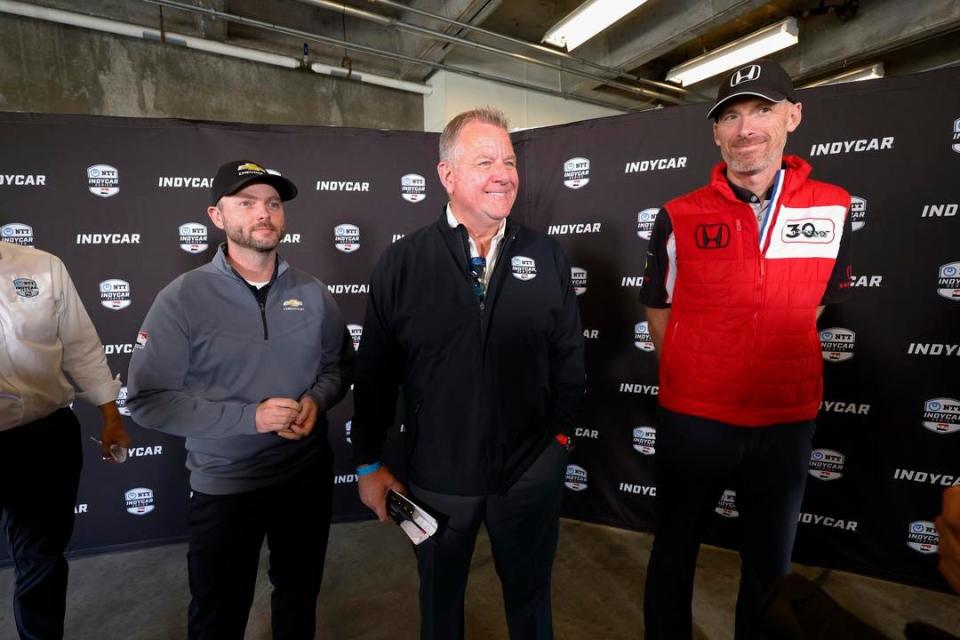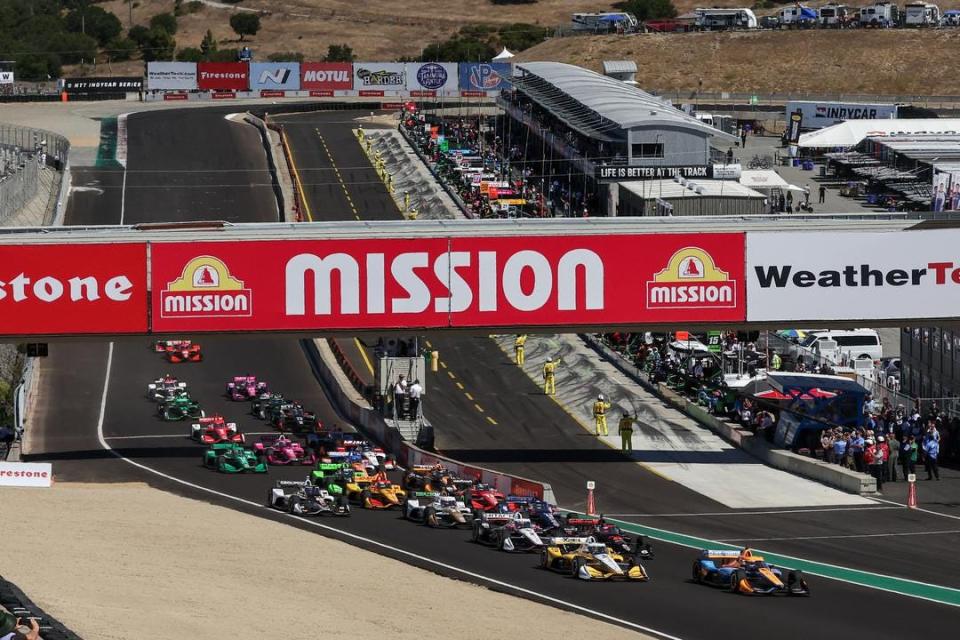After a dozen years running the DW12, IndyCar charting course for new car as early as 2027
Months before he stepped down as IndyCar president following the end of the 2015 season, Derrick Walker drew up a plan for the sport’s future – most notably, plans for the successor to the DW12 chassis that had debuted a little over three years earlier.
Months into the messy, expensive manufacturer aerokit era of the sport that would last through the end of 2017, it was Walker’s vision to produce a “futuristic” looking car featuring a rear-view camera (no mirrors) and sizable weight reduction that would’ve been used for eight seasons.
Fearing the cost, Walker’s plan was rebuffed.
Eight-and-a-half years after Walker walked away from the sport – the car moved back to a universal aerokit in 2018 and the added an aeroscreen in 2020 but had few other developments – IndyCar officials say they’re finally exploring the development of a new chassis.
Penske Entertainment president and CEO Mark Miles told a small group of reporters Thursday a new car could be ready by 2027 at the earliest, though it would require decisions within a matter of months. Should IndyCar move expeditiously, it would give the DW12 a 15-year life span. To put that into perspective, its successor would debut a year later than Walker once believed the successor to his own project would.
Along with the rollout of this new car, Miles said, would come IndyCar’s next version of its powertrain – an internal combustion engine and newly-developed hybrid system – two-and-a-half years after the hybrid system makes its racing debut later this summer.
“We’re not to the point of fully establishing (2027) as a deadline or goal, but I think that is the focus, and we’re hopeful we’ll be able to roll out the next powertrain, along with major developments (to it), and a new chassis by 2027,” Miles said. “We’re hard at work with Honda, Chevy, Ilmor, Dallara and other major international suppliers to think about what’s possible.
“We want to improve our ability to attract additional OEMs by lowering the cost barriers to entry, but we also want to make sure we do it in a way that’s even more relevant to the auto industry. I think it’ll be exciting for our fan base, coming with relevant technology and styling enhancements we think can score a lot of points with fans.”
Mark Miles: IndyCar proposed charter system to owners without guaranteed Indy 500 entries

Miles added any such project would come with additional safety enhancements along with a focus on more eco-friendly and sustainable materials beyond the 100% renewable Shell fuel the series adopted in 2023.
A 2027 debut would come following the expiration of the contracts of current engine manufacturers Chevy and Honda, heightening its importance to be technologically relevant and cost-effective. Late last year, Chuck Schifsky, the head of marketing and communications for Honda Racing Corp. USA, aired the company’s frustrations with IndyCar’s lack of return on investment and hinted at the realistic possibility the manufacturer would walk at the end of this current deal.
Suggestions in the paddock since then have included the adoption of a spec internal combustion engine, purportedly built by Ilmor – which presently builds Chevy’s IndyCar engines and is co-owned by IndyCar series owner Roger Penske. Present – and ideally future – engine manufacturers would then have control over its engines’ electronics and other parts that would take a small fraction of the costs of building, developing and perfecting compared to Honda and Chevy’s current powertrains.
The debut of IndyCar’s hybrid system – a midseason release that initially bristled some competitors – and its ensuing level of success will likely play a major role in Honda's eventual decision, given just how much HRC USA has driven IndyCar’s move towards hybrid technology.
Long-term plans for finale: Despite complications, IndyCar eyeing Nashville long-term to finish seasons

“I think the hybrid technology is pivotally important to Honda, so we need to get that out there for several reasons, not the least of which is that it’s something we promised Honda we’d deliver and that they’ve worked very hard on, along with Chevy and Ilmor, to help us develop,” Miles said. “I think the relationship is in a good place."
When asked what he saw as the sport’s most important issues to tackle in the near-future, Miles noted teams are presently hyper-focused on containing costs – something the sport’s sanctioning body has largely reined in between the aeroscreen’s debut in 2020 and this past season.
Court documents: Pato O'Ward lands 2-year, $10.2 million payday after Alex Palou lawsuit
This offseason, though, teams have faced costs ranging from $300,000-$400,000 per chassis on component updates related to the hybrid system – meaning a team like Chip Ganassi Racing with five full-time entries and multiple backup cars waiting in the wings likely spent $2 million on the upgrades.
Depending on the makeup of IndyCar’s next-generation car and whether it utilizes some or all of the series’ new lightweight parts, teams’ multi-million-dollar investments this winter may end up facilitating just three years’ worth of racing, with the far-steeper costs of an entirely new car coming soon.
“There’s a big (cost) increase this year, as we bring on the hybrid, and (teams) had to make changes to their cars in anticipation of it, so we’ve worked very hard on that, to be in a place where the ecosystem could absorb these increased costs,” Miles said. “We’ll have the same priority in mind as we think about the next car and the vision for 2027.”
This article originally appeared on Indianapolis Star: IndyCar: New car, further hybrid engine development could come in 2027
